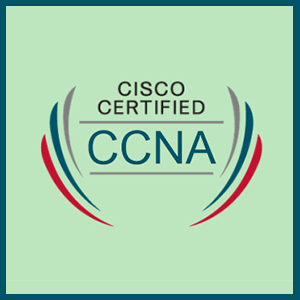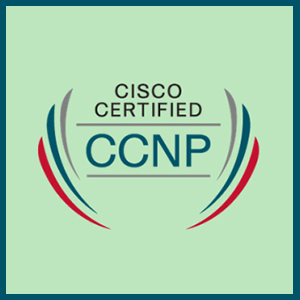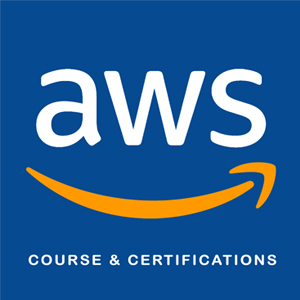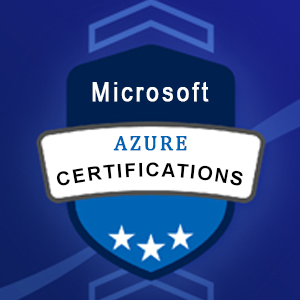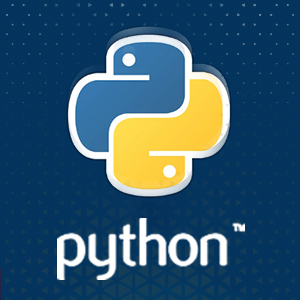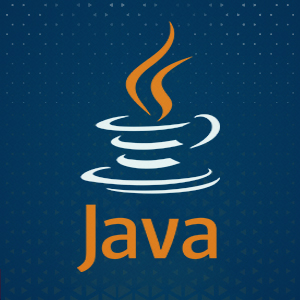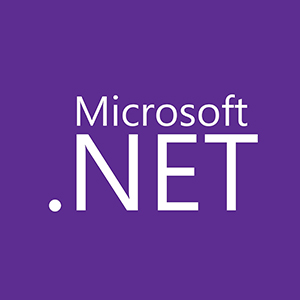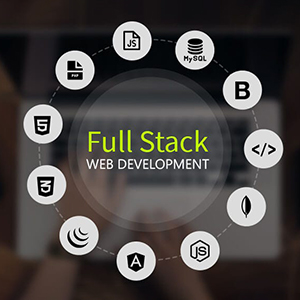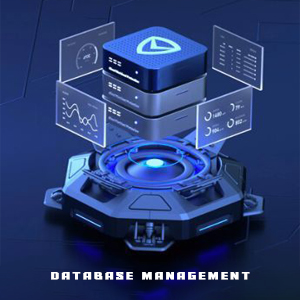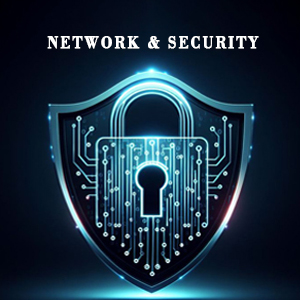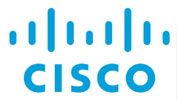Call For Inquiry
Master CCNP: Advanced Networking and Enterprise Solutions is a detailed course designed to help you achieve the Cisco Certified Network Professional (CCNP) certification. Whether you're an experienced network engineer or looking to advance your skills, this course covers everything from advanced routing and switching to enterprise network design and troubleshooting.
What You'll Learn:
- Advanced Routing:
- Implementing EIGRP, OSPF, and BGP for enterprise networks.
- Configuring route redistribution and path control.
- Advanced Switching:
- Designing and implementing VLANs, STP, and Ether Channel.
- Troubleshooting complex switching issues.
- Enterprise Network Design:
- Designing scalable and secure enterprise networks.
- Implementing network redundancy and high availability.
- Network Security:
- Configuring advanced security features like firewalls and VPNs.
- Implementing Cisco Identity Services Engine (ISE) for network access control.
- Automation and Programmability:
- Using Python and APIs for network automation.
- Implementing Cisco DNA Center for network management.
- Real-World Projects:
- Design and implement an enterprise network solution.
- Troubleshoot and optimize network performance.
Who Is This Course For?
- Experienced network engineers and IT professionals.
- Students pursuing advanced networking certifications.
- Anyone looking to build a career in enterprise networking.
Prerequisites:
- CCNA certification or equivalent knowledge.
- Familiarity with Cisco networking equipment and protocols.
CCNP ROUTING & SWITCHING
Cisco Certified Network Professional (CCNP) Routing and Switching affirmation approves the capacity to design, actualize, confirm and investigate nearby and wide-zone undertaking systems and work cooperatively with experts on cutting edge security, voice, remote and
video arrangements. The CCNP Routing and Switching affirmation is proper for those with no less than one year of systems administration encounter who are prepared to propel their aptitudes and work autonomously on complex system arrangements. The individuals who accomplish CCNP Routing and Switching have exhibited the aptitudes required in big business jobs, for example, organize design, bolster build, frameworks specialist or system professional. The directing and changing convention information from this confirmation will give an enduring establishment as these aptitudes are similarly important in the physical systems of today and the virtualized arrange elements of tomorrow.
PREREQUISITES
Valid Cisco CCNA Routing and Switching certification or any Cisco CCIE certification can act as a prerequisite.
REQUIRED EXAM(S)
300-101 RoUTE
300-115 SWITCH
300-135 TSHooT
Recommended Training
Implementing Cisco IP Routing (RoUTE)
Implementing Cisco IP Switched Networks (SWITCH)
Troubleshooting and Maintaining Cisco IP Networks (TSHooT)
1.ROUTE - IMPLEMENTING CISCO IP ROUTING (300-101)
Actualizing Cisco IP Routing (ROUTE 300-101) is a 120-minute qualifying exam with 50‒60 inquiries for the Cisco CCNP and CCDP confirmations. The RoUTE 300-101 exam ensures the steering information and abilities of effective competitors. They are confirmed in utilizing propelled IP tending to and steering in actualizing versatile and exceptionally secure Cisco switches that are associated with LANs, WANs, and IPv6. The exam likewise covers the design of profoundly secure directing answers for help branch workplaces and portable specialists.
1.0 NETWORK PRINCIPLES
- Identify Cisco Express Forwarding concepts, FIB,Adjacency table
- Explain general network challenges,Asymmetric routing
- Describe IP operations,ICMP Unreachable and Redirects,TTL
- IPv4 fragmentation,Explain TCP operations,MSS,MTU,Windowing
- Bandwidth-delay product,Global synchronization
- Recognize proposed changes to the network
- Changes to routing protocol parameters,Migrate parts of the network to IPv6
2.0 LAYER 2 TECHNoLoGIES
- 2.1 Configure and verify PPP,Authentication (PAP, CHAP)
- 2.1 PPPoE (client side only) ,Explain Frame Relay,Point-to-point and Multipoint
3.0 LAYER 3 TECHNoLoGIES
- 3.1 Identify, configure, and verify IPv4 addressing and subnetting
- 3.2 Address types (Unicast, broadcast, multicast, and VLSM)
- 3.3 ARP,DHCP relay and server,DHCP protocol operations
- 3.4 Identify IPv6 addressing and subnetting,Unicast,EUI-64,ND, RS/RA
- 3.5 DHCP relay and server,DHCP protocol operations
- 3.6 Configure and verify static routing,Configure and verify default routing
- 3.7 Evaluate routing protocol types,Distance vector,Link state,Path vector
- 3.8 Describe administrative distance,Troubleshoot passive interfaces
- 3.9 Configure and verify VRF lite,Configure and verify filtering with any protocol
- 3.10 Configure and verify redistribution between any routing protocols or routing sources
- 3.11 Configure and verify manual and auto summarization with any routing protocol
- 3.12 Configure and verify policy-based routing,Explain RoUTE maps
- 3.13 Identify suboptimal routing,Route tagging and filtering
- 3.14 Configure and verify loop prevention mechanisms
- 3.15 Split-horizon,Route poisoning,Configure and verify RIPv2,Describe RIPng
- 3.16 Describe EIGRP packet types,Configure and verify EIGRP stubs
- 3.17 Configure and verify EIGRP neighbor relationship and authentication
- 3.18 Configure and verify EIGRP load balancing,equal cost,Unequal cost
- 3.19 Describe and optimize EIGRP metrics,Configure and verify EIGRP for IPv6
- 3.20 Describe oSPF packet types
- 3.21 Configure and verify oSPF neighbor relationship and authentication
- 3.22 Configure and verify network types, area types, and router types
- 3.23 Point-to-point, multipoint, broadcast, no broadcast
- 3.24 LSA types, area type: backbone, normal, transit, stub, NSSA, totally stub
- 3.25 Internal router, backbone router, ABR, ASBR,Virtual link
- 3.26 Configure and verify oSPF path preference,Configure and verify oSPF operations
- 3.27 Configure and verify oSPF for IPv6
- 3.28 Describe, configure, and verify BGP peer relationships and authentication
- 3.29 Peer group,Active, passive,States and timers
- 3.30 Configure and verify eBGP (IPv4 and IPv6 address families) 4-byte AS number,Private AS
- 3.31 Explain BGP attributes and best-path selection
4.0 VPN TECHNoLoGIES
- 4.1 Configure and verify GRE
- 4.2 Describe DMVPN (single hub)
- 4.3 Describe Easy Virtual Networking (EVN)
5.0 INFRASTRUCTURE SECURITY
- 5.1 Describe IoS AAA using local database
- 5.2 Describe device security using IoS AAA with TACACS+ and RADIUS
- 5.3 AAA with TACACS+ and RADIUS, Local privilege authorization fallback
- 5.4 Configure and verify device access control
- 5.5 Lines (VTY, AUX, console), Password encryption, Management plane protection
- 5.6 Configure and verify router security features
- 5.7 IPv4 access control lists (standard, extended, time-based)
- 5.8 IPv6 traffic filter, Unicast reverse path forwarding
6.0 INFRASTRUCTURE SERVICES
- 6.1 Configure and verify device management, Console and VTY
- 6.2 Telnet, HTTP, HTTPS, SSH, SCP, Configure and verify SNMP V2, V3
- 6.3 Configure and verify logging, Local logging, syslog, debugs, conditional debugs, imestamps
- 6.4 Configure and verify Network Time Protocol (NTP),NTP master, client, NTP uthentication
- 6.5 Configure and verify IPv4 and IPv6 DHCP, DHCP client, IoS DHCP server, DCP relay
- 6.6 configure and verify IPv4 Network Address Translation (NAT), Static NAT, dnamic NAT, PAT
- 6.7 Describe SLA architecture, Configure and verify IP SLA, ICMP
- 6.8 Configure and verify tracking objects, Tracking objects
- 6.9 configure and verify Cisco Net Flow, NetFlow v5, v9, Export (configuration only)
EXAM DESCRIPTIoN
Actualizing Cisco IP Switched Networks (SWITCH 300-115) is a 120-minute qualifying exam with 45‒55 inquiries for the Cisco CCNP and CCDP affirmations. The SWITCH 300-115 exam affirms the exchanging learning and aptitudes of effective applicants. They are affirmed in arranging, designing, and confirming the usage of complex endeavor exchanging arrangements that utilization the Cisco Enterprise Campus Architecture.
1.0 LAYER 2 TECHNoLoGIES
- Configure and verify switch administration, SDM templates
- Managing MAC address table, Troubleshoot Err-disable recovery
- Configure and verify Layer 2 protocols, CDP, LLDP, and UDLD
- Configure and verify VLANs,Access ports,VLAN database
- Normal, extended VLAN, voice VLAN,Configure and verify trunking,dot1Q,Native VLAN
- VTPv1, VTPv2, VTPv3, VTP pruning,Manual pruning
- Configure and verify Ether Channels LACP, PAgP, manual,Layer 2, Layer 3
- 1.8. Load balancing Ether Channel misconfiguration guard
- Configure and verify spanning tree,PVST+, RPVST+, and MST
- Switch priority, port priority, path cost, STP timers,Port Fast, BPDUguard, and BPDUfilter
- Loop guard and Root guard, SPAN, RSPAN
2.0 INFRASTRUCTURE SECURITY
- 2.1 Configure and verify switch security features
- 2.2 DHCP snooping,IP Source Guard,Dynamic ARP inspection
- 2.3 Port security,Private VLAN,Storm control
- 2.4 Describe device security using Cisco IoS AAA with TACACS+ and RADIUS
- 2.5 AAA with TACACS+ and RADIUS,Local privilege authorization fallback
3.0 INFRASTRUCTURE SERVICES
- 3.1 Configure and verify first-hop redundancy protocols HSRP, VRRP, GLBP
- 3. TSHooT-Troubleshooting and Maintaining Cisco IP Networks v2 (300-135)
EXAM DESCRIPTIoN
Troubleshooting and Maintaining Cisco IP Networks v2 (TSHooT 300-135) is a 120-minute qualifying exam with 15‒25 questions for the Cisco CCNP certification. The TSHooT 300-135 exam certifies that the successful candidate has the knowledge and skills necessary to:
- Plan and perform regular maintenance on complex enterprise routed and switched networks
- Use technology-based practices and a systematic ITIL-compliant approach to perform network troubleshooting
1.0 NETWoRK PRINCIPLES
- Use Cisco IoS troubleshooting tools,Debug, conditional debug
- Ping and trace route with extended options,Apply troubleshooting methodologies
- 1.3. Diagnose the root cause of networking issues (analyze symptoms, identify and describe root cause)
- Design and implement valid solutions. Verify and monitor resolution
2.0 LAYER 2 TECHNoLoGIES
- 2.1 Troubleshoot switch administration,SDM templates
- 2.2 Managing MAC address table,Troubleshoot Err-disable recovery
- 2.3 Troubleshoot Layer 2 protocols. CDP, LLDP and UDLD
- 2.3 Troubleshoot VLANs. Access ports VLAN database,Normal, extended VLAN, voice VLAN
- 2.4 Troubleshoot trunking VTPv1, VTPv2, VTPv3, VTP pruning.dot1Q,Native VLAN Manual pruning
- 2.5 Troubleshoot EtherChannels,LACP, PAgP, manual,Layer 2, Layer 3 Load balancing
- 2.6 Ether Channel misconfiguration guard
- 2.7 Troubleshoot spanning tree, PVST+, RPVST +, MST
- 2.8 Switch priority, port priority, path cost, STP timers
- 2.9 PortFast, BPDUguard, BPDUfilter, Loop guard, Root guard
- 2.10 Troubleshoot other LAN switching technologies
- 2.11. SPAN (Switch Port Analyzer Port), RSPAN
3.0 LAYER 3 TECHNoLoGIES
- 3.1 Troubleshoot IPv4 addressing and subnetting, Address types 3.1.a)
- 3.2 ARP,DHCP relay and server
- 3.3 Troubleshoot IPv6 addressing,Unicast,EUI-64,ND, RS/RA
- 3.4 Troubleshoot static routing and default routing
- 3.5 Troubleshoot administrative distance and passive interfaces
- 3.6 Troubleshoot filtering with any protocol
- 3.7 Troubleshoot between any routing protocols or routing sources
- 3.8 Troubleshoot manual and auto summarization with any routing protocol
- 3.9 Troubleshoot policy-based routing and suboptimal routing
- 3.10 Troubleshoot loop prevention mechanisms,Split-horizon
- 3.11 Troubleshoot RIPv2,EIGRP neighbor relationship and authentication
- 3.12 Troubleshoot loop free path selection,RD, FD, FC, successor, feasible successor
- 3.13 Troubleshoot EIGPR operations,Stuck in active
- 3.14 Troubleshoot EIGRP load balancing equal cost and unequal cost
- 3.15 Troubleshoot EIGRP metrics
- 3.16 Troubleshoot oSPF neighbor relationship and authentication
- 3.17 Troubleshoot network types, area types, and router types
- 3.18 Point-to-point, multipoint, broadcast, nonbroadcast
- 3.19 LSA types, area type: backbone, normal, transit, stub, NSSA, totally stub
- 3.20 Internal router, backbone router, ABR, ASBR, Virtual link
- 3.21 Troubleshoot oSPF path preference
- 3.22 Troubleshoot BGP peer relationships and authentication
- 3.23 Peer group,Active, passive,States and timers
- 3.24 Troubleshoot eBGP,4-byte AS number,Private AS
4.0 VPN TECHNoLoGIES
- 4.1 Troubleshoot GRE
5.0 INFRASTRUCTURE SECURITY
- 5.1 Troubleshoot IoS AAA using local database,device access control
- 5.2 Troubleshoot Lines (VTY, AUX, console),Management plane protection
- 5.3 Password encryption,Troubleshoot router security features
- 5.4 IPv4 access control lists (standard, extended, time-based)
- 5.5 Unicast reverse path forwarding
6.0 INFRASTRUCTURE SERVICES
- 6.1 Troubleshoot device management,Console and VTY, Telnet
- 6.2 Troubleshoot SNMP V2, V3
- 6.3 Troubleshoot logging,Local logging, syslog, debugs, conditional debugs,Timestamps
- 6.4 Troubleshoot Network Time Protocol (NTP)
- 6.5 DHCP client, IoS DHCP server, DHCP relay
- 6.6 Static NAT, Dynamic NAT, PAT ,Troubleshoot SLA architecture
- Implementing EIGRP, OSPF, and BGP for enterprise networks.
- Configuring route redistribution and path control.
- Troubleshooting routing issues.
- Designing and implementing VLANs, STP, and EtherChannel.
- Troubleshooting complex switching issues.
- Implementing Layer 3 switching.
- Designing scalable and secure enterprise networks.
- Implementing network redundancy and high availability.
- Troubleshooting enterprise network issues.
- Configuring advanced security features like firewalls and VPNs.
- Implementing Cisco Identity Services Engine (ISE) for network access control.
- Securing network devices and monitoring traffic.
- Using Python and APIs for network automation.
- Implementing Cisco DNA Center for network management.
- Preparing for the CCNP certification exam.
- Design and implement an enterprise network solution.
- Troubleshoot and optimize network performance.
- Present your project and receive feedback.
- Building a portfolio with CCNP projects.
- Tips for landing a job as an enterprise network engineer.
- Freelancing and consulting opportunities.

Related Courses
Explore Our Top Categories
The Ultimate IT Training: From Basics to Breakthroughs Join Our free WebinarData Analytics
Are you ready to future-proof your IT career and stay ahead in the fast-evolving tech landscape? Join our exclusive webinar, Transform Your IT Career!
20 May, 2025 - 11- AM
Free Webinar
Register Now
Latest Blog Updates



Transform Your Career with Insta InfoTech - Premier IT Training Institute
Join Insta InfoTech for cutting-edge IT training programs designed to boost your skills and career prospects. Offering expert-led Courses in Software Development, Data Science, Cybersecurity, and more.
00+
Trained Students
00+
Years of Experience
00+
Countries Represented
00x7
Support


What We Offer
At Insta Infotech, we specialize in a wide array of courses across domains like:
Send Us Email





